What Are Scope Reticles? Learn the Different Types & More
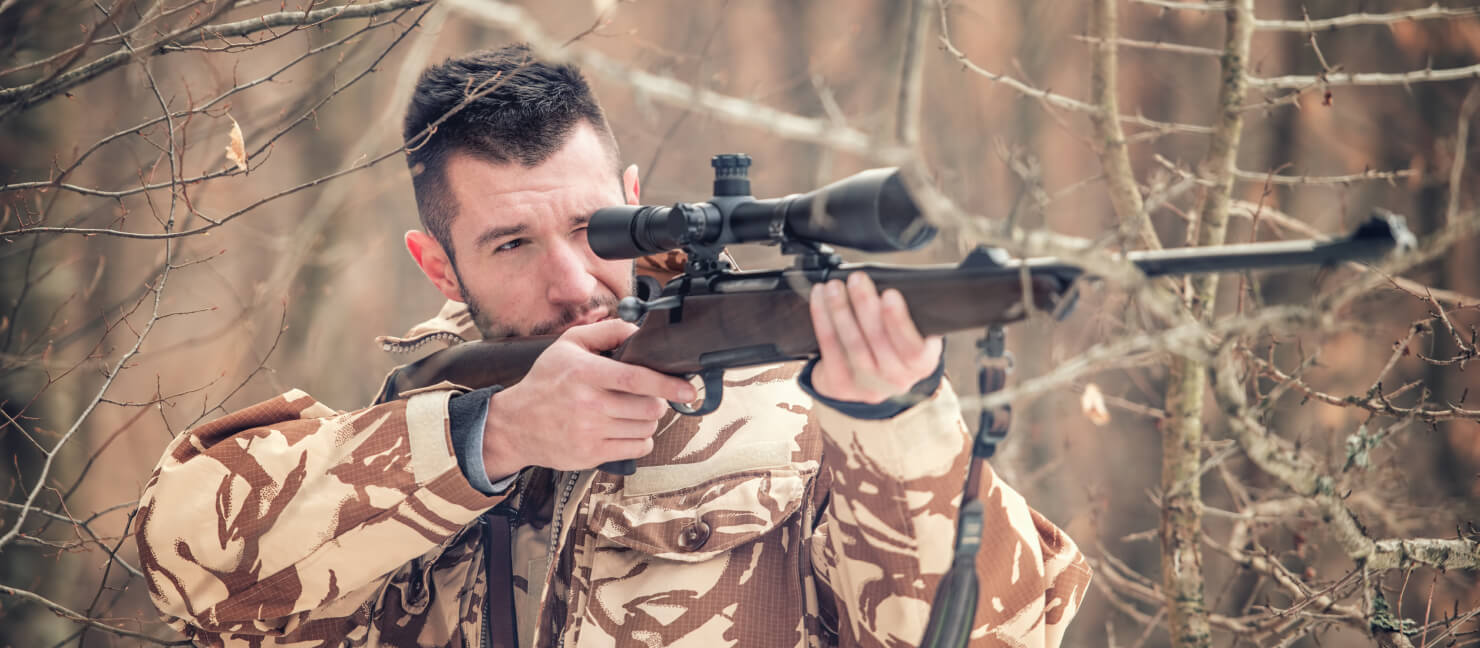
Ready to bag a whitetail deer? You could aim your shotgun and hope for the best, but the right type of scope reticle will help you zero in on your game. In this guide, you’ll learn all about the different scope reticle types so you can find the optimal one to use on your hunting trips.
Key Takeaways
- Find out what a reticle means and how they magnify your field of vision.
- Discover the different scope reticle types and how they stack up to one another.
- Learn our top considerations for choosing the best scope reticle for your shotgun.
What Is a Reticle?
A scope reticle is simply the crosshair or markings that are integrated into a scope. They help you aim and enhance your field of vision.
-
Reticles can be crafted from materials such as wire or etched glass — offering durability and precision.
-
These markings come in various designs and configurations, tailored to meet specific shooting requirements.
-
You have a lot of reticle types and feature varieties to choose from: ones with a single dot for an unobstructed view and those with hash marks that account for wind drift.
-
With countless brands on the market (like the renowned Burris) — each offering a myriad of reticle options, narrowing down your selection can be a challenging task.
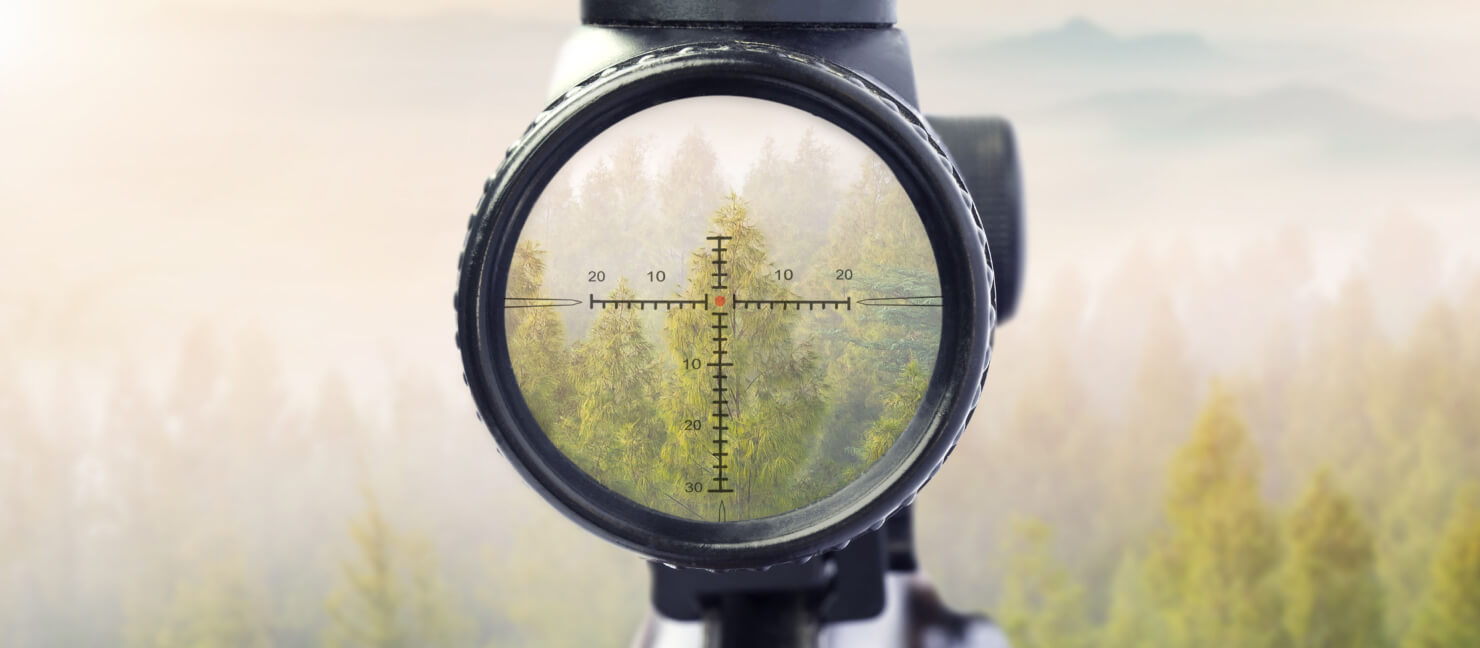
Expert Tip:
Each manufacturer will assign their unique name to a particular style of reticle, resulting in multiple names for essentially the same design.
Scope Reticle Types
Reticles are the crosshair used to aim in your rifle scope. You can think of a reticle like the lens in your glasses. They are typically sold only as part of a scope and not separately.
Knowing which reticle you prefer can influence which scope you purchase. To simplify your decision-making process, we narrowed down the most common scope reticle types so you can pinpoint the reticle that aligns with your hunting needs.
| Scope Reticle Types Guide | ||
|---|---|---|
| Reticle Type | Description | Best For |
| Original Reticle | Traditional crosshair design | General-purpose shooting |
| Dot Reticle | Single dot for aiming | Precision shooting, quick target acquisition |
| Non-Illuminated Reticles | Come in a variety of styles with no illumination | Hunting, general-purpose shooting, daytime use |
| Illuminated Reticles | Come in a variety of styles and feature illumination on the crosshairs | Low-light conditions, fast target acquisition |
| Christmas Tree Reticle | Graduated horizontal lines that get wider closer toward the bottom | Long-range shooting, precision holdovers |
| Standard Mil Dot | Thick posts with dots on all four crosshairs | Range estimation, windage and elevation adjustments |
| BDC Reticle | Thick posts on the left, right, and bottom crosshairs and dots on the 6 o’clock crosshair | Bullet drop compensation, hunting |
| Duplex Reticle | Heavy posts with a thin crosshair in the center | Hunting, general-purpose shooting |
| German # Reticle | Thick left, right, and bottom posts with a thin crosshair in the center | Hunting, general-purpose shooting |
Original Reticle
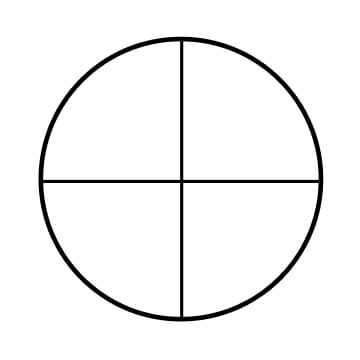
The original scope reticle boasts a straightforward design consisting of horizontal and vertical crosshairs, which converge to form an effective aiming marker. This classic reticle style is great for beginners — providing a clear and intuitive visual reference for aiming.
Dot Reticle
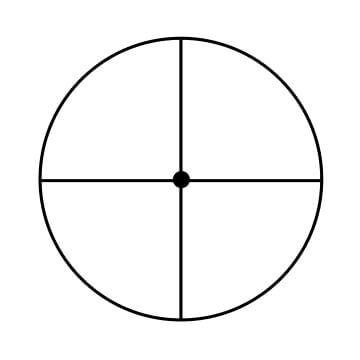
Dot reticles are incredibly basic in design that offer a minimalistic approach to aiming. They feature a single dot positioned in the center of the reticle. Dot reticles can also be found without crosshairs.
-
Some dot scope reticles may include additional crosshairs that intersect with the central dot.
-
This is ideal for those who prefer a clean and minimalist sight picture.
Non-Illuminated Reticles
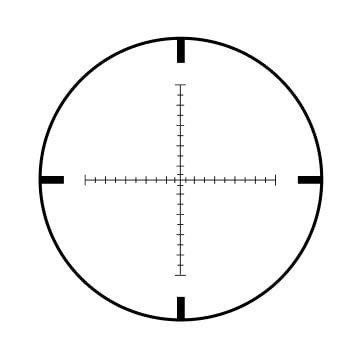
Non-illuminated scope reticles rely on contrasting colors or black outlines against the background to provide a clear aiming point.
-
While they do not offer illumination options for low-light conditions, non-illuminated reticles are known for their simplicity.
-
Non-illuminated reticles are less expensive than illuminated options and don’t require batteries.
Illuminated Reticles
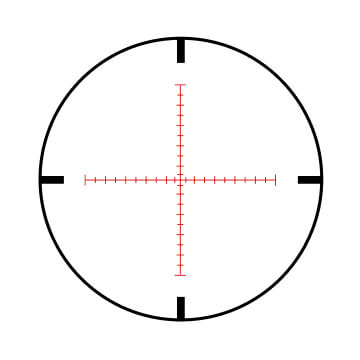
Illuminated reticles offer a distinct advantage in low-lighting conditions with its built-in illumination feature. These scope reticles utilize internal lighting sources — like fiber optics or LED technology — to provide a glowing or illuminated aiming point.
-
This illumination enhances visibility and contrast that makes it easier to see deer and other game in the woods.
-
Illuminated reticles provide hunters and shooters with the necessary visibility to excel in the dawn, dusk, or nighttime.
Christmas Tree Reticle
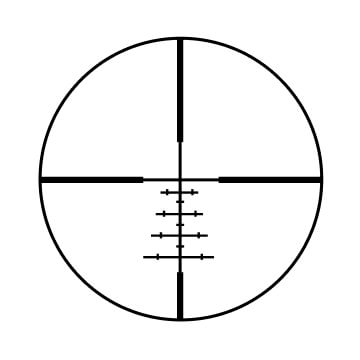
The Christmas tree scope reticle is characterized by hash marks arranged in the shape of a Christmas tree: tapering wider towards the bottom.
-
This unique design enables shooters to compensate for wind drift when engaging targets at extended distances.
-
The wider hash marks at the bottom of the reticle allow for precise windage adjustments: aiding in accurate long-range shooting.
-
Christmas tree reticles are commonly found in hunting/tactical hybrid scopes, mil-dot scopes, and military rifle scopes.
-
Snipers benefit from the Christmas tree reticle since they provide these shooters with the necessary tools to account for windage and achieve remarkable accuracy.
Standard Mil Dot
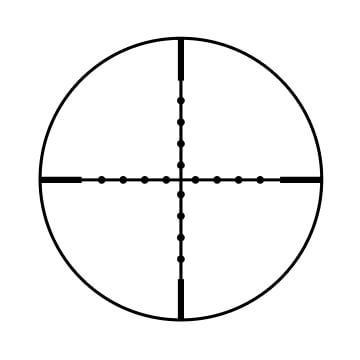
The standard mil-dot reticle (also known as the milliradian reticle) is measured in milliradians, which are commonly referred to as mils.
-
The mil-dot reticle helps shooters estimate target size and distance.
-
It features small dots or points along the horizontal and vertical crosshairs evenly spaced at specific mil intervals.
-
By comparing measurements to the target’s size or using formulas, shooters can adjust for bullet drop and windage compensation.
BDC Reticle

The BDC (Bullet Drop Compensation) scope reticle offers shooters with precise aiming points to compensate for bullet drop (the distance a bullet falls in the air after being fired).
-
This reticle serves as a ballistics reticle. This allows shooters to account for the trajectory of their ammunition at various distances.
-
The BDC reticle is highly versatile and finds applications in hunting, competition shooting, and target shooting.
-
Distance markers in the BDC reticle can take the form of hash marks, circles, or dots, providing clear reference points for aiming at specific distances.
Duplex Reticle

The duplex scope reticle is a widely used reticle design, particularly in hunting rifle scopes.
-
It employs thick, bold crosshairs that gradually taper towards the center, drawing the shooter's eye to the focal point.
-
This type of reticle is highly effective for precision shooting and excels in big game hunting scenarios where hitting vital areas is crucial.
-
The thick outer portion of the crosshairs provides quick target location and helps in low-light conditions.
-
The thinner center section allows for precise aiming at smaller targets.
German # Reticle

The German # reticle is renowned for its simplicity and user-friendly design.
-
It consists of a dot positioned at the center, providing a precise aiming point.
-
This reticle features thicker crosshairs at the 3, 6, and 9 o'clock positions.
-
This type of reticle is commonly found with illumination options because it enhances visibility at dawn and dusk.
Choosing the Best Scope Reticle
Once you know which type of reticle you’d like to stick with, you’ll need to account for other factors (like the firearm you use, your scope budget, and more). Reticles are not interchangeable so you’ll need to consider the scope as a whole before you make your purchase.
Firearm
Scope reticles are designed for specific firearms and they mount onto each differently. For instance, choose a rifle scope if you’re using a rifle or a handgun scope if you hunt exclusively with handguns.
Scope Budget
Advanced reticles with additional features can be on the more expensive end. Reticles can range between $50-$700 on average. Illuminated reticles also cost more than non-illuminated reticles.
Intended Use
Scope reticles perform differently depending on how you’re hunting, when you’re hunting, and your expertise level.
-
If you will be doing long-range hunting, opt for a ballistics reticle.
-
If you’ll be hunting after dusk or before dawn, opt for an illuminated reticle to make it easier to see.
-
If you’re a beginner, choose a basic reticle like an original reticle.
Center Marker
The center marker is used to indicate where to aim and shoot so it should be easy to see. The size of the center marker can vary as you change the magnification. Explore whether you’d prefer a cross, dot, or no center marker at all!

Read the Product Description
Before you purchase a scope, be sure to read the product description. Each reticle dot, line, or hash mark represents a specific value. Review the product manual to understand all of the features it comes with.
Thin vs Thick Crosshairs
Deciding between thin vs thick crosshairs comes down to personal preference. You can also choose a reticle with a combination of the two.
-
Thick Crosshairs: Thick crosshairs can be easier to see against a woodsy background. They also draw your eye to the center to help you find your target.
-
Thin Crosshairs: Thin crosshairs can give you a higher level of accuracy and are typically illuminated.
Magnification
Scope reticles are available in two different types of magnification: fixed or variable. There are pros and cons to each:
-
Fixed Scopes: Fixed scopes feature a single magnification power with a sharp, clear image. They tend to be cheaper than variable magnification, but don’t perform well over long distances.
-
Variable Scopes: Variable scopes offer more magnification options, which is helpful when shooting from long distances. You will be able to zoom in on your target for a clearer image.
Additional Features
Decide whether you want your scope reticle to be illuminated, non-illuminated, water-proof, fog-proof, or shockproof. Some scope reticles also feature a fast-focus eyepiece for eye relief.
Have Fun Out There!
From rabbits to squirrels and whitetails, a scope with the correct reticle helps you bag any game. Scope reticles magnify your field of vision so you can aim with precision and take home dinner in a bag.
From simple reticles with a dot and crosshair to ones with markings that can account for low lighting and windage corrections — we’ve got you covered! Buy a scope reticle today so you’re equipped with the hunting tools you need.


